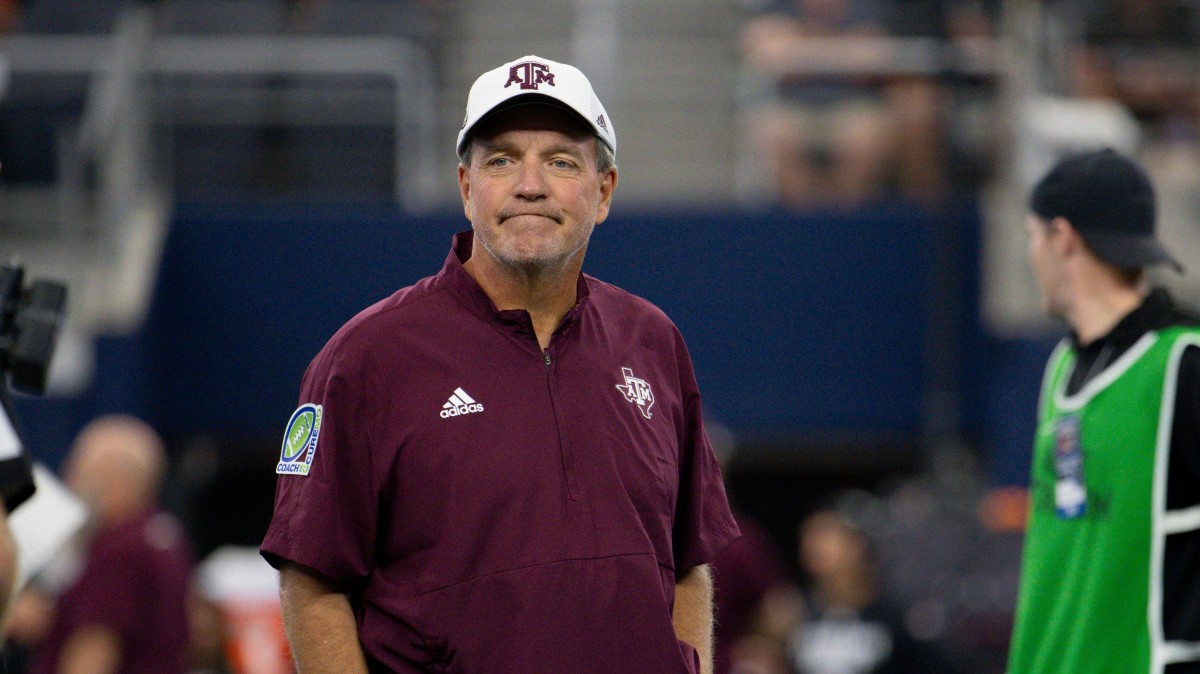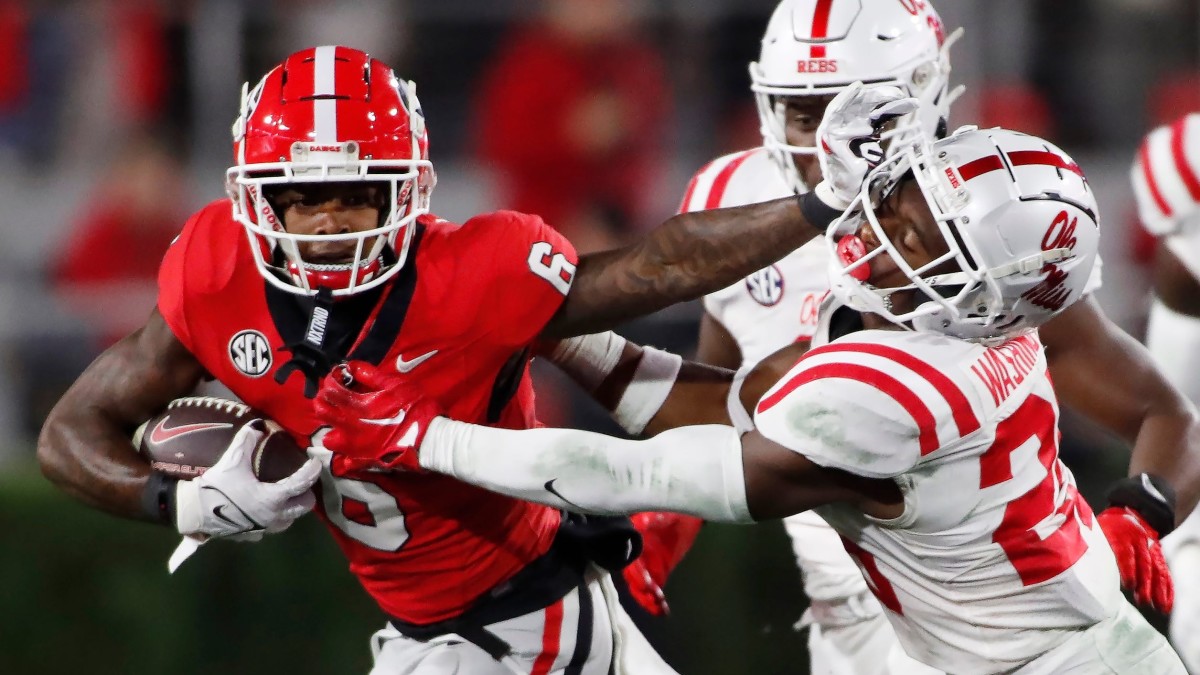Texas A&M Hits Nine-Figure Reset Button With Jimbo Fisher Firing

Forty names, games, teams and minutiae making news in college football (hangover cures sold separately in Stillwater):
First Quarter: The Texas A&M Conundrum
Amid what has been an unusually calm season down South, the SEC finally resumed acting up Sunday: Texas A&M (1) bit a $75 million bullet and fired Jimbo Fisher a day after he won a league game by 41 points with his third-string quarterback. The timing is weird but the result was inevitable, once the school reconciled with the fiscal irresponsibility of paying by far the biggest buyout in college sports history.
Between paying off Fisher and his staff and replacing them, this figures to be an expenditure of more than $125 million. Oil prices being what they are, there seems to be plenty of silly money for boosters to blow on college football in Texas, between this and Southern Methodist buying its way into the Atlantic Coast Conference.
The Aggies are willing to massively overpay their football coaches despite having no historical proof that greatness will follow. Location, facilities and fan commitment strongly suggest that Texas A&M and championships should go together, but that hasn’t been borne out. It’s been a fool’s errand chasing fool’s gold at a program that is almost always good and almost never great.
Texas A&M has won one national championship, in 1939. They’ve finished in the AP top five only four times since the poll came into existence in ’36, and those four appearances were sporadic: ’39 under Homer Norton; ’56 under Bear Bryant; 2012 under Kevin Sumlin; and ’20 under Fisher. In the 21st century, A&M has finished the season in the Top 25 just six times.

The Aggies’ last conference championship was in 1998, in the Big 12. They have never won the SEC West nor played in the league championship game. Other than the Johnny Manziel-led blip in 2012, Texas A&M failed to fully capitalize on its 12-season status as the SEC school in the Lone Star State—a distinction it now must share with hated rival Texas starting next year.
So it’s fair to ask whether Texas A&M is a good job in reality or just in theory. It’s a great place to be paid a fortune, but also a great place to be fired. Since Bryant left the school for Alabama in 1957, almost all of A&M’s subsequent 11 coaches were terminated or forced to resign. Since R.C. Slocum finished a 14-season tenure in 2002, the average tenure is 5.3 years, and none of those four coaches finished a sixth season. The Aggies have had just one losing season in the last 15, but being good hasn’t been good enough to stay for a long time.
It stands to reason that Texas A&M made this move now because it didn’t want Fisher building back support by winning his last three games and finishing 8–4. Fact is, 8–4 is simply more of the same under Fisher anyway, and certainly was not the expectation when he was swiped from Florida State with the original whopper contract in 2018.
Who is next? That could be wild. Lane Kiffin (2) expressed interest last year in leaving Mississippi for another SEC school (Auburn), but that ultimately didn’t happen. Kiffin might bring more of the same kind of disorganization that was part of the Fisher experience, though. And Lane is 0-for-Alabama as a head coach.
Mike Elko (3) of Duke was A&M’s defensive coordinator under Fisher from 2018 to ‘21. He wouldn’t be a splashy hire, necessarily, but his 15–8 record at a lightweight football program speaks highly of his ability. Lance Leipold (4) has worked a similar miracle at Kansas, but has no experience at a huge, ravenous program like A&M.
Would the Aggies want to go back to the Florida State playbook and make a run at Mike Norvell (5)? He’s undefeated in his fourth year in Tallahassee, but if the Seminoles make the College Football Playoff he assuredly wouldn’t be available until January. (Unless he’s as mercenary as Brian Kelly, who bailed on Notre Dame for LSU while the Fighting Irish still had a chance of making the CFP.)
The three coaches tearing up the Pacific Northwest (6) all could be in line for new jobs or massive new contracts: Kalen DeBoer at Washington, Dan Lanning at Oregon and Jonathan Smith at Oregon State. Of those three, Lanning is the one with SEC experience as defensive coordinator at Georgia.
DeBoer and Lanning also could have their names in play at Michigan (7) if Jim Harbaugh leaves the controversy behind and returns to the NFL. That situation could remain in flux into January as well, given the Wolverines’ prominent position in the CFP chase and the later NFL job cycle. Harbaugh was close to signing a huge new contract at Michigan in October, but the Connor Stalions escapade has delayed finalizing it and might complicate his future at his alma mater.

Four for the Playoff
Each week, The Dash lays out the College Football Playoff bracket as if today is Selection Sunday. None of the prime candidates lost Saturday, but that doesn’t mean everything is status quo. There is a new No. 1 in town.
Sugar Bowl: top seed Georgia (8) vs. fourth seed Washington (9).
The Bulldogs (10–0) flexed on No. 10 Mississippi, punishing the Rebels’ defense in a powerful show of force. Georgia racked up season highs of 611 total yards and 10.02 yards per play, running and passing with equal aplomb. The defense also knocked Ole Miss quarterback Jaxson Dart out of the game while holding the Rebels to less than half their season scoring average. The two-time reigning champions reminded everyone that the path to the title still runs between the hedges. Next up for Georgia: at Tennessee.
The Huskies (10–0) passed their second of three successive November tests, holding off Utah one week after beating USC and one week before facing 8–2 Oregon State. Quarterback Michael Penix Jr. had his second-lowest efficiency rating of the season (139.3), but that can happen against the Utes; he still managed to find the great Rome Odunze for a pair of long touchdowns and ran for a score. Washington’s 457 yards of offense were the most Utah has allowed this year. Next up for Washington: at Oregon State.
Rose Bowl: second seed Ohio State (10) vs. third seed Michigan.
The Buckeyes (10–0) had the easiest opponent of the undefeated teams and disposed of Michigan State with commensurate ease. Marvin Harrison Jr. scored three touchdowns in less than 16 minutes to bolster his Heisman Trophy campaign, and the lack of competitive pressure allowed Ohio State to give running back TreVeyon Henderson a relatively light workload (just 13 carries and 15 touches from scrimmage). The Buckeyes still haven’t given up more than 17 points this season. Next up for Ohio State: Minnesota.
The Wolverines (10–0) finally played somebody, and did so without Harbaugh after his Friday suspension from the Big Ten. (The Dash will get into the latest Michigan melodrama in the Second Quarter.) The manner in which Michigan dispatched Penn State was straight out of a Bo Schembechler fantasy, running the ball on its last 32 official offensive snaps and throwing just eight passes all game. It was a quality win amid tumultuous circumstances, but it also was so workmanlike that it probably didn’t put much of a scare into any future opponents. Do the Wolverines have the offensive firepower to win it all? Next up for Michigan: at Maryland.
Dropped out: Florida State.
Also considered: Florida State, Alabama, Texas, Oregon.
